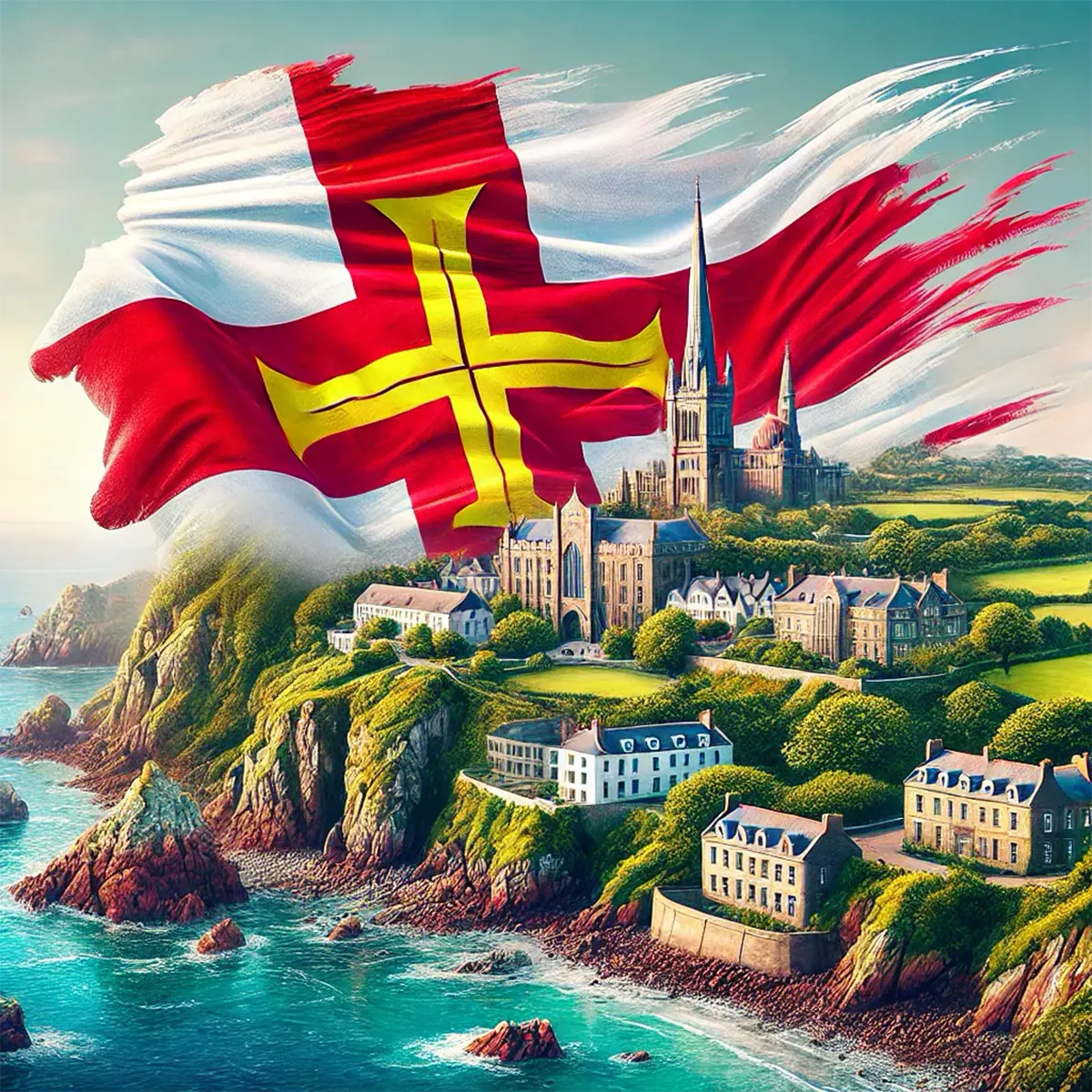Created in 1985, this flag is relatively new. Before that, the Guernsey flag consisted of a simple cross of St. George - red on a white background. But this led to some confusion, as the same flag was used by England. So, for example, at the Commonwealth Games, when the teams of England and Guernsey were competing, other competitors thought that England had two teams.
So Guernsey decided that a new flag was needed. A committee was formed, and after much thought and research, it proposed to continue using the St. George's Cross, adding to it the golden cross of William the Conqueror.

Her Majesty the Queen described the flag as follows: a golden cross superimposed on a St. George cross (which is the image of the cross on the standard of William the Conqueror). The new flag was first raised on May 9, 1985, in honor of the 40th anniversary of the island's liberation from occupation during World War II. The red St. George's Cross is also found on the flags of Alderney and Sark, and is therefore a common theme in the flags used in the Bailiwick of Guernsey.




